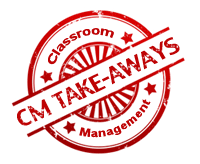
- How to properly arrange and design the classroom environment to maximize student learning.
- Learn how to keep students visually focused on top classroom priorities.
- Learn strategies to earn respect and regain classroom control.
Does the classroom environment have a major impact on student learning? Yes. The design, layout, seating arrangement, decor, and even lighting set the tone, feel, and atmosphere of a classroom. In other words, how you set up your classroom can make a difference, for the good or the bad, in the achievement of your students.
A primary goal of educators is to create and maintain the most positive learning environment in the classroom possible. However, teachers often have to work in less than ideal environments under less than ideal circumstances. Does your workday routinely include events and situations beyond your immediate control? Do you have to work in a classroom that is too small, work with a broken (or missing) air conditioner, or make due with a lack of resources? We have good news. In our seminar, we will focus on what YOU CAN do within the limitations of your circumstances.
Learning vs. Behaviors
Teachers struggle with the knowledge that the best learning environment for one student may not be what is best for another. Above all, how do you make sure that a diverse group of students, in the same classroom, each gets a fair chance at learning?
In the seminar, we will examine how the design of a classroom must thoughtfully support student learning and appropriate student behaviors. With good classroom management strategies, teachers can minimize misbehavior that interferes with the desired goal of learning.
For example, a seating arrangement may look like it is perfectly set up for students to learn. Instead, it may instead be perfectly set up to invite inappropriate behaviors. Teachers can anticipate behaviors if they factor in both the classroom chemistry and the emotional maturity of the students. In other words, regardless of your situation, the physical design of your classroom must take into account consequences on BOTH student learning and student behavior.
![]()

